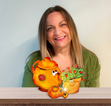How Elements of the Story Grow like Little Pot
The elements of the story can be easily remembered if you compare them to how a plant grows. If you follow these steps and include the elements, you’ll write great stories that grow in the hearts of your readers. In addition, you can purchase resources that encompass these ideas here from the TPT store.
Elements of the story are like plantsA little clay pot will illustrate the process. Little Pot is a vessel created by the potter for the purpose of bearing fruit. The story of The Little Pot includes different parts of a story too. You can purchase the picture book here.
Stories have many parts just like plants. Plants are all different. Some are long and tall. Others are short and bright. They can be prickly, sharp, colorful, and fragrant. Even though plants look, smell, and feel different, they all require the same things to grow. Likewise, your writing will require elements to grow into a great story. We will be comparing the following seven elements.
Different parts of a storySettingThe main character with obvious and hidden needsInciting IncidentRising action with two-fold eventsClimaxUnexpected SurpriseConclusion and a fruitful lesson The settingThe soil and pot is the place where a plant can grow. Likewise, the setting is the place your story will grow. Consider the time, place, mood, culture, and climate. Then describe the setting.
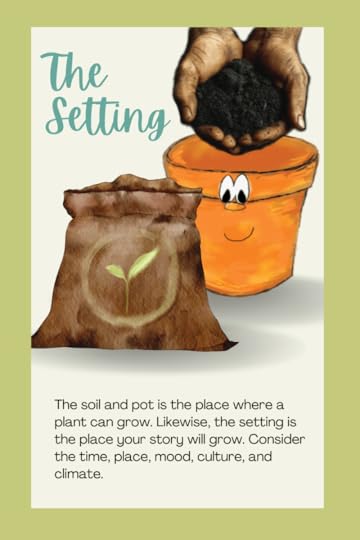 Think of the setting as soil where you will plant and grow your story.The main character with obvious and hidden needs
Think of the setting as soil where you will plant and grow your story.The main character with obvious and hidden needsThe main character is the seed planted in the setting (soil). It must have an obvious need (water) and a hidden need (sunlight). Just as farmers plant many seeds, your story will have many characters. However, the main character is the one that should have an obvious and hidden need. The obvious need is clear and visible like water. However, the character may not even be aware of their hidden need. The effects of this need are simply felt during the story. It is not something your reader will look directly at. Therefore, it should be something emotional or spiritual. Likewise, it is something that everyone needs and will make your reader identify with your character.
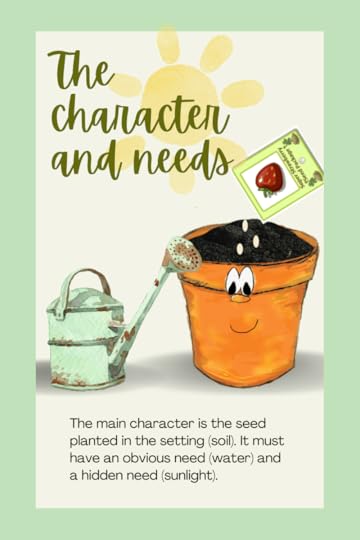 The main character is like a seed planted in the setting or soil. it should have an obvious and a hidden needlesson 3: your faith is more important than your works
The main character is like a seed planted in the setting or soil. it should have an obvious and a hidden needlesson 3: your faith is more important than your worksSomething happens…
Inside the pot, buried in the soil, the seed breaks open, and new roots begin to form, upsetting the seed’s world. Then, a stem climbs and grows upward. In your story, this is the moment where something happens to the main character. A new event occurs that upsets the balance within the main character’s world. It should be esciting and gran the attention of your reader. This new journey will climb and grow throughout the narrative. The rising action of the story has begun.
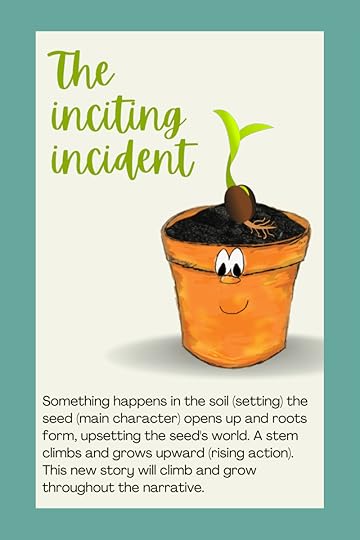 The inciting incident is the moment when the seed opens and a new story begins to grow.The elements of the story include two-fold events
The inciting incident is the moment when the seed opens and a new story begins to grow.The elements of the story include two-fold eventsAs the stem moves upward, leaves grow out of it. A leaf has two sides. As your story moves onward, events occur. Each event should have two sides too. One side should be positive and the other should be negative. Your story can have many events, just as a plant can have many leaves. However, it is good to have three main positive and negative events.
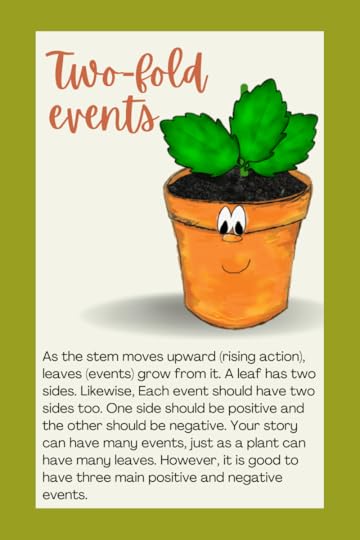 The events in the story should have a good and bad side.The climax
The events in the story should have a good and bad side.The climaxJust as the rhythm of the leaves growing seems natural, a hard receptacle forms. The receptacle is not pretty and will require a natural phenomenon to open. The same will grow within your story. The rhythm of events is moving and then suddenly your character must face the hardest crisis of all. This is the point where your reader believes all is doomed to fail unless a miracle happens. They cannot stop reading now because they must see how the character will get through this.
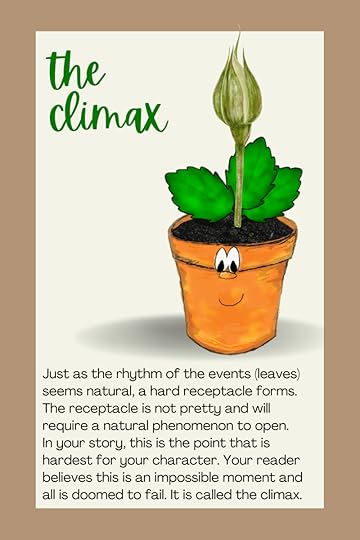 The climax is like the receptacle of the plant.An unexpected surprise
The climax is like the receptacle of the plant.An unexpected surpriseUnexpectedly, the receptacle opens and births a flower. Just as all seems lost, something unexpected unfolds in your story. Therefore, your narrative opens to birth a new and beautiful outcome. This event should surprise your readers. Likewise, your character gets help from an unexpected source. It may be that another charcter who your reader thought was gone forever comes back to save the day. Whatever it is, it should be a flowery and beatiful moment of the story.
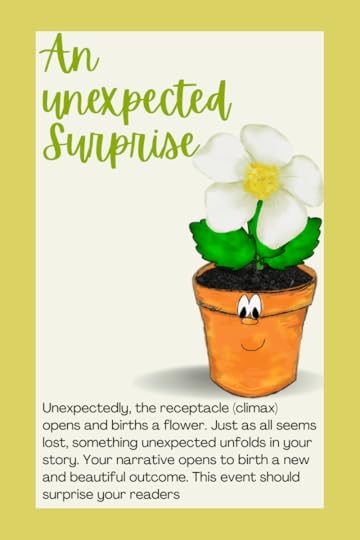 Unexpectedly the receptacle opens and births a flower.A fruitful lesson learned
Unexpectedly the receptacle opens and births a flower.A fruitful lesson learnedIt’s not over just yet. In addition., that beautiful flower will turn to fruit and produce new seeds. Both the hidden and obvious needs you identified at the beginning of your story should be met. Likewise, your character has grown and is now birthing an outcome that can produce a whole new story.
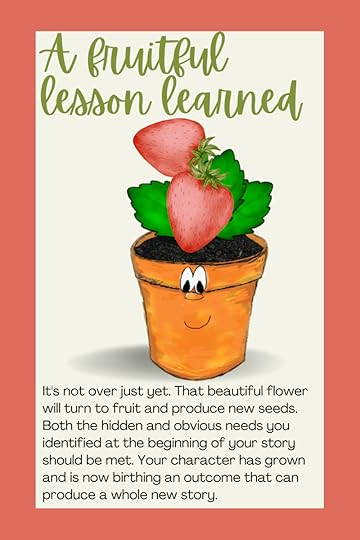 The elements of the story should include a fruitful ending.Elements of the story worksheet
The elements of the story should include a fruitful ending.Elements of the story worksheetIf you enjoyed reading about how the elements of the story connect to growing a plant, you will enjoy getting a copy of our elements of the story worksheet and presentation. Likewise, Dawn loves to visit schools and teach these steps herself. This writing workshop can be incorporated into an author visit for students too.
Little Pot is not only great at growing stories. It also demonstrates a model for growing the fruit of the Spirit. Why not join the potter and his vessels on their fruit-bearing journey? Just put in your first name and email below so we can send you the steps to becoming a fruit-bearing vessel. You will also get a fruitful Friday email each week with ways to be even more fruitful!
 Learn how the potter grows the fruit of the Spirit through you.
Learn how the potter grows the fruit of the Spirit through you.You can purchase signed copies of these books from our store. The books are also available on Amazon.
If you prefer to buy the entire set as a signed copy, go here. If you would like to schedule Dawn for a speaking engagement or author visit, go here.
The post How Elements of the Story Grow like Little Pot appeared first on Inspirational Children’s Books & Creative Teacher Resources.

